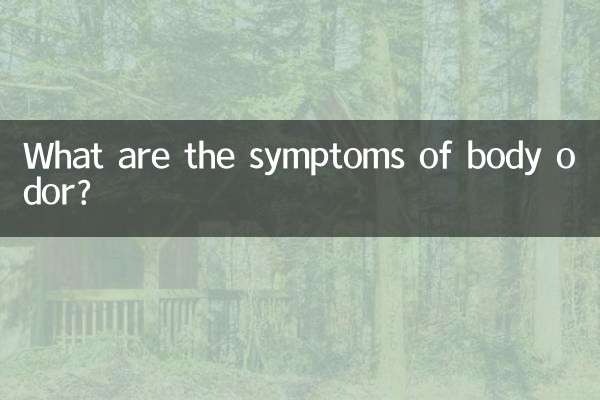What are the symptoms of myocardial ischemia?
Myocardial ischemia is a common cardiovascular disease caused by insufficient blood supply to the heart, usually due to narrowing or obstruction of the coronary arteries. In recent years, with the accelerated pace of life and the increase in bad living habits, the incidence of myocardial ischemia has gradually increased. Understanding its symptoms is crucial for early detection and treatment. The following is a detailed introduction to the symptoms and related data of myocardial ischemia.
1. Common symptoms of myocardial ischemia

The symptoms of myocardial ischemia vary from person to person, but the following are some typical clinical manifestations:
| Symptoms | Description | Incidence rate (%) |
|---|---|---|
| Chest pain or tightness | Manifested as pressure, tightening or burning sensation, often located behind the sternum or in the precordium area | 70-90 |
| difficulty breathing | Feeling short of breath during activity or rest, which may be accompanied by fatigue | 50-70 |
| Palpitations | Fast, irregular heartbeat or feeling like your heart is beating strongly | 30-50 |
| dizziness or fainting | Due to insufficient blood supply to the brain, sudden fainting may occur in severe cases | 20-40 |
| nausea or vomiting | Some patients are accompanied by digestive system symptoms | 10-30 |
2. Risk factors for myocardial ischemia
The occurrence of myocardial ischemia is related to multiple risk factors. The following are the main risk factors:
| risk factors | degree of influence | Precautions |
|---|---|---|
| high blood pressure | high | Control blood pressure and monitor it regularly |
| Hyperlipidemia | high | Low-fat diet, medication |
| diabetes | high | Blood sugar management, healthy eating |
| smoking | Middle to high | Quit smoking and avoid secondhand smoke |
| lack of exercise | in | At least 150 minutes of moderate-intensity exercise per week |
3. Diagnosis and treatment of myocardial ischemia
If symptoms of suspected myocardial ischemia occur, seek medical attention promptly. The following are common diagnostic methods and treatments:
| diagnostic methods | Description |
|---|---|
| Electrocardiogram (ECG) | Detect electrical activity of the heart to detect ischemia or arrhythmia |
| coronary angiography | Direct observation of coronary artery stenosis or obstruction |
| Heart ultrasound | Assess heart structure and function |
In terms of treatment, the doctor may choose the following methods according to the condition:
| Treatment | Applicable situations |
|---|---|
| drug treatment | Antiplatelet drugs, lipid-lowering drugs, antihypertensive drugs, etc. |
| interventional therapy | Stenting to improve blood flow |
| lifestyle adjustments | Quit smoking, eat healthily, exercise regularly |
4. How to prevent myocardial ischemia
The key to preventing myocardial ischemia lies in controlling risk factors and maintaining healthy lifestyle habits:
1.healthy eating: Reduce the intake of high-fat and high-salt foods and eat more vegetables, fruits and whole grains.
2.regular exercise: Get at least 150 minutes of moderate-intensity aerobic exercise each week.
3.Quit smoking and limit alcohol: Smoking and excessive alcohol consumption significantly increase the risk of cardiovascular disease.
4.Regular physical examination: Especially those with family history or high-risk groups should check their blood pressure, blood lipids and blood sugar regularly.
Myocardial ischemia is a disease that requires great attention, and early detection and treatment can significantly improve the prognosis. If you or someone around you develops relevant symptoms, please seek medical treatment promptly to avoid delaying the condition.

check the details

check the details